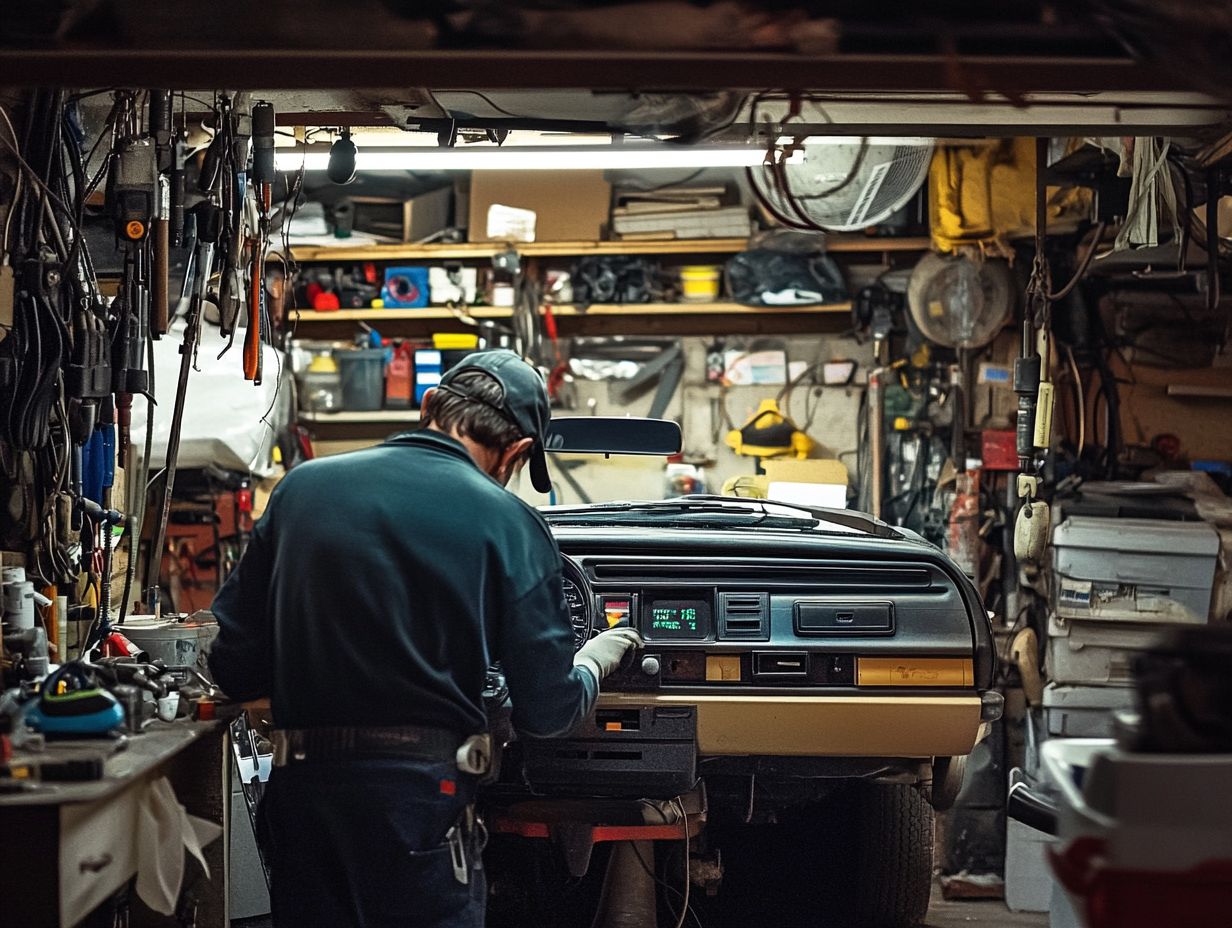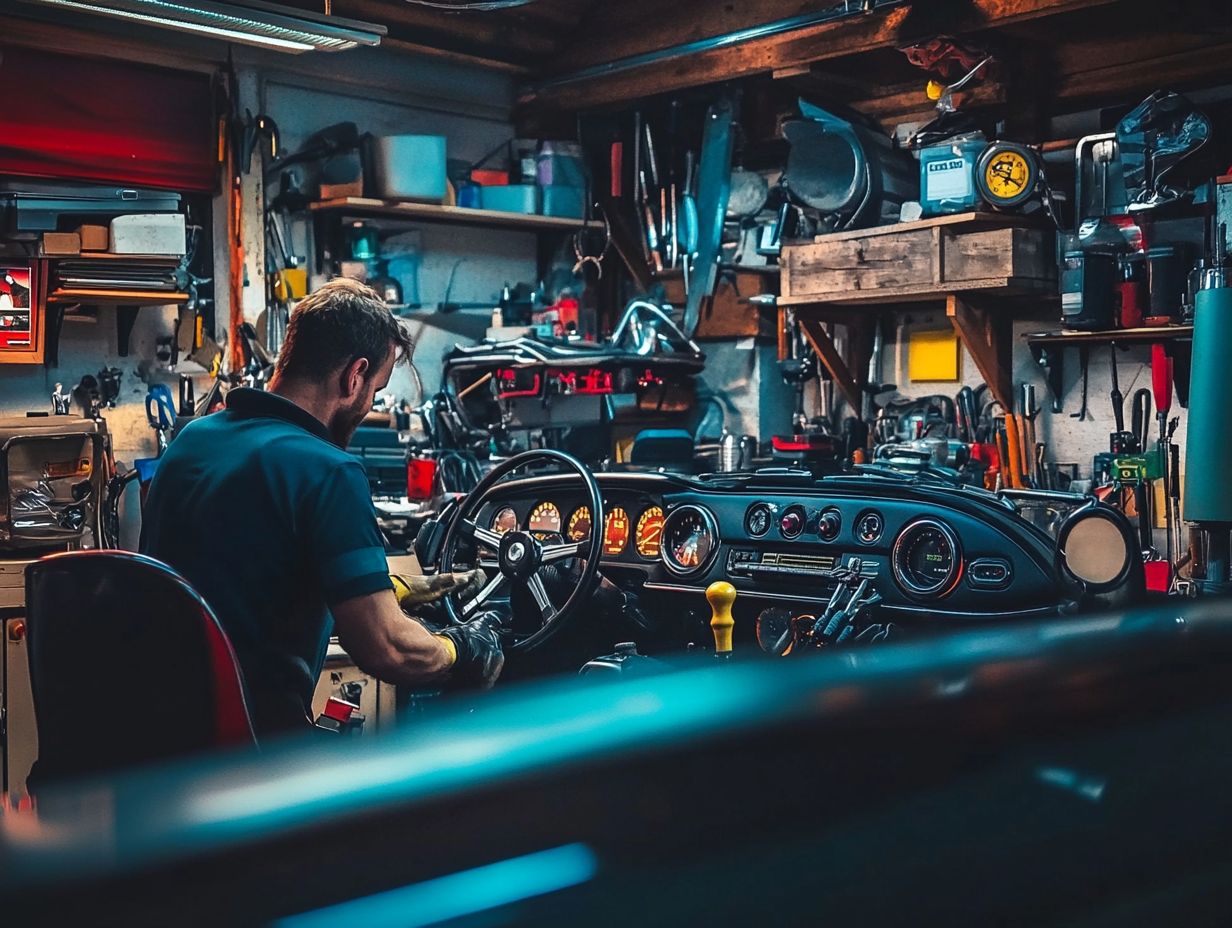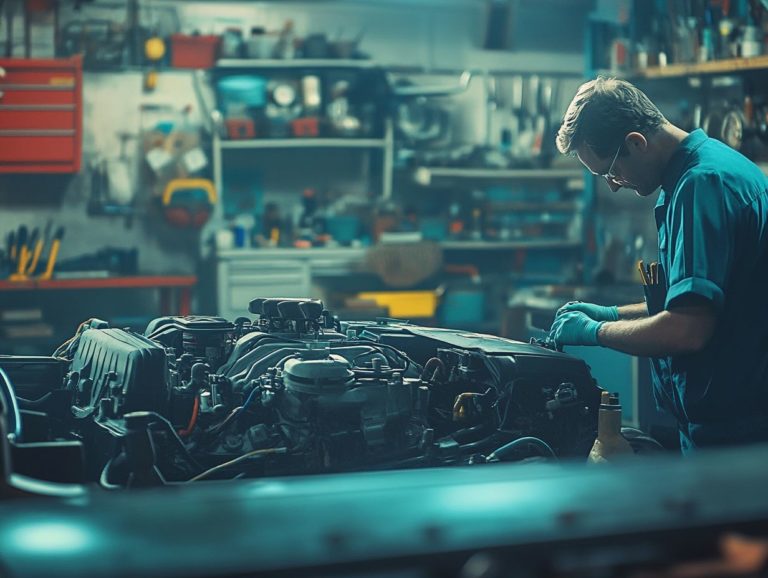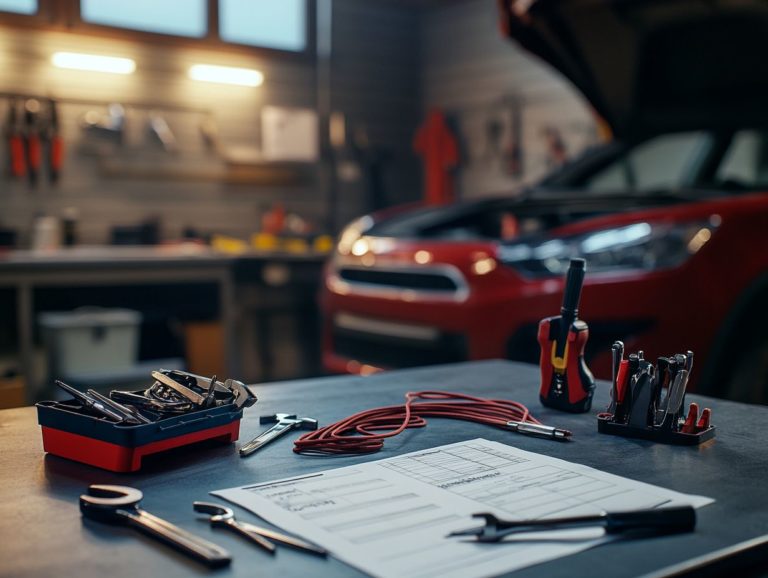How to Ensure Your Car’s Safety Features Work
In today s fast-paced world, making sure your car’s safety features are top-notch is vital. This article explores the safety features in modern vehicles, showing how they protect you and your passengers.
Regular maintenance is key to keeping these features functioning well. We ll highlight essential checks to ensure your safety systems are in peak condition.
Stay alert and drive confidently!
Contents
- Key Takeaways:
- Understanding Your Car’s Safety Features
- Regular Maintenance for Optimal Performance
- Ensuring Proper Installation and Functionality
- Upgrading Your Car’s Safety Features
- Frequently Asked Questions
- What are some simple steps I can take to ensure my car’s safety features are working properly?
- How often should I get my car’s safety features inspected?
- What should I do if I suspect a problem with one of my car’s safety features?
- Can I rely solely on my car’s safety features to keep me safe while driving?
- What maintenance tasks ensure my car’s safety features work well?
- Can I upgrade or add additional safety features to my car?
Key Takeaways:

- Regular maintenance is crucial for ensuring your car’s safety features work properly. Prioritize checking key components like brakes, tires, and lights to keep your car safe on the road.
- Proper installation of safety features is essential. Follow guidelines and test functionality regularly. If you notice any issues, troubleshoot and seek professional help to ensure your safety features are functioning correctly.
- Don t wait! Upgrade your car’s safety features as technology advances. Research and weigh the costs and benefits before making any changes.
Understanding Your Car’s Safety Features
Understanding your car’s safety features is vital for ensuring your safety and protection while on the road. With the rapid advancements in automotive technology, modern vehicles come equipped with an impressive range of safety features designed to prevent accidents and minimize injuries.
The National Highway Traffic Safety Administration (NHTSA) emphasizes that these features can significantly influence crash data and outcomes. Car manufacturers are constantly innovating to meet and exceed safety standards, making it essential for you to grasp how these advanced technologies such as airbags and electronic stability control collaborate to safeguard lives on the road.
Types of Safety Features
You ll find a variety of safety features designed to elevate vehicle safety, with each one serving a distinct purpose in protecting you and your passengers while preventing accidents.
From advanced airbags that deploy at just the right moment during collisions to robust seat belts that keep you securely in place, these elements work together to enhance the overall safety profile of modern vehicles. Electronic stability control is vital, helping to prevent skidding and loss of control, especially in tricky driving conditions.
Features like automatic emergency braking are particularly impressive; they can detect an impending collision and apply the brakes, dramatically reducing the likelihood of an accident.
Lane departure warning systems keep you informed if you unintentionally drift out of your lane, promoting safer travel. Together, these technologies create a more secure driving experience, all with the goal of minimizing road mishaps and protecting everyone on the road.
How They Work
Understanding how safety features work is essential for appreciating their role in vehicle safety.
These technologies create a sophisticated network of protective measures to minimize risks while you’re on the road. For example, electronic stability control employs sensors to detect any loss of traction, automatically applying brakes to individual wheels, which helps you maintain control during slippery conditions.
Likewise, pedestrian detection systems use cameras and radar to spot pedestrians in your vehicle’s path, providing alerts or even engaging automatic braking to avert potential collisions.
The integration of such driver assistance technologies not only elevates your driving experience but also significantly reduces the chances of accidents, ultimately contributing to a safer environment for everyone on the road.
Regular Maintenance for Optimal Performance
Keep your vehicle safe with regular maintenance! This ensures that safety features work well and meet manufacturer standards.
Routine checks help you find small issues before they become big problems. Systems like airbags and stability control need to work perfectly when you need them.
Importance of Maintenance

Maintenance is vital for making your vehicle’s safety features effective. Learning how to maintain your car’s safety features can ensure that these features are in top condition, as they can save lives.
Regular checks of your brakes and airbags are necessary to avoid malfunctions. Studies show cars with regular maintenance are 50% less likely to crash due to mechanical failures.
By staying ahead of your maintenance schedule, you enhance your vehicle’s performance and increase your chances of a safe journey. Making regular inspections a priority is essential for everyone who values safety on the road.
Key Components to Check
When conducting vehicle maintenance, always check essential components like seat belts and airbags. Inspect your brakes, tires, and headlights to ensure safety.
Checking the brake systems, tire conditions, and headlight functionality is crucial since these elements impact your stopping power and visibility. Regularly checking brake pads and fluid can prevent catastrophic failures, while tire conditions significantly affect traction and handling.
Incorporating modern technology, such as backup cameras, can transform your vehicle s safety. These features provide an extra layer of awareness, helping you avoid obstacles while reversing and ultimately preventing accidents.
Ensuring Proper Installation and Functionality
Proper installation of safety features is crucial. Incorrect setups can compromise safety.
It s important to follow the guidelines set by the National Highway Traffic Safety Administration (NHTSA) during installation. These guidelines ensure that advanced technologies, like driver assistance systems, perform as they should.
By understanding how these features connect within the vehicle, you can help prevent accidents and potentially save lives.
Installation Guidelines
Follow installation guidelines from your car manufacturer and NHTSA. This ensures all parts function safely, delivering optimal safety during operation.
Neglecting these instructions can lead to serious consequences, including the malfunction of critical safety systems like airbags and anti-lock braking systems. Improper installation not only puts you at risk but also increases danger for passengers and other road users.
Understanding the ramifications of incorrect installation is crucial for maintaining your vehicle’s integrity and ensuring that all safety features operate effectively, ultimately safeguarding lives on the road.
Testing and Troubleshooting
Testing and troubleshooting safety features is an essential step in ensuring how well they work, especially when it comes to advanced safety features. Regular assessments are crucial for uncovering any potential vulnerabilities that could endanger those who depend on these systems.
Imagine a situation where a vehicle’s lane-keeping assist feature fails to respond accurately while you’re cruising on the highway. By conducting systematic checks, you can pinpoint blind spots or error messages that might signal sensor misalignment or software glitches.
Utilizing real-world data like incident reports or feedback from everyday users highlights the necessity of these evaluations. This proactive approach allows you to address common issues swiftly.
Whether that means recalibrating sensors or updating software, it’s all about ensuring optimal performance and enhancing overall safety on the road.
Upgrading Your Car’s Safety Features

Upgrading your car’s safety features can make a huge difference in how safe you feel on the road. As manufacturers tirelessly innovate and enhance safety standards, it becomes crucial for you to consider:
- Automatic emergency braking (a feature that stops your car to avoid collisions).
- Lane departure warning (alerts you if you drift out of your lane).
- Pedestrian detection (helps prevent accidents with pedestrians).
By investing in these essential upgrades, you not only enhance your own protection on the road but also contribute to overall traffic safety potentially saving lives in the process.
When to Consider Upgrades
Recognizing the right moment for upgrading your vehicle’s safety features is crucial for maintaining peak safety and staying in tune with the latest crash data trends.
If a new model hits the market boasting superior safety ratings or innovative technology like automatic emergency braking, it s a clear signal to reassess your current vehicle’s capabilities.
As advancements in materials and design unfold, older vehicles might fall short in offering essential protections against collisions.
By keeping yourself informed about crash data from trusted sources, you can pinpoint patterns associated with common types of accidents that may require enhanced safety features.
This proactive approach streamlines your decision-making process and grants you a greater sense of peace while navigating the roads.
Options and Costs
When you’re considering upgrades for your car s safety features, assess the options available and their associated costs.
Many manufacturers now provide advanced technologies such as automatic emergency braking, lane departure warnings, and adaptive cruise control (a system that automatically adjusts the car’s speed to maintain a safe distance from the vehicle ahead), all of which can significantly enhance your driving safety.
The investment in these features can vary dramatically, ranging from a few hundred to several thousand dollars, depending on your car s brand and model.
Some manufacturers even offer financing plans or incentives, allowing you to spread the costs over time. Exploring these options might uncover attractive offers, like low-interest loans or discounts for upgrading safety features, making it much easier for you to invest in your vehicle’s safety.
Frequently Asked Questions
What are some simple steps I can take to ensure my car’s safety features are working properly?
Check your brakes, tires, and airbags regularly. It’s also important to keep up with routine maintenance and address any issues promptly.
How often should I get my car’s safety features inspected?

It’s recommended to have your car’s safety features checked at least once a year, or more frequently if you notice any issues or changes in their performance. Additionally, understanding what to know about new car safety features can help you ensure everything is in optimal condition before embarking on a long road trip.
Don’t wait! Consult a professional about your vehicle s safety features today.
What should I do if I suspect a problem with one of my car’s safety features?
If you notice something unusual with your car’s safety features, get it checked by a professional mechanic right away. Ignoring the problem could put your safety at risk.
Can I rely solely on my car’s safety features to keep me safe while driving?
No, safety features are there to assist you, but they cannot replace good driving habits. Always wear your seatbelt, follow traffic laws, and avoid distractions when driving.
What maintenance tasks ensure my car’s safety features work well?
Regular inspections are essential. Keep your car clean to prevent dirt or objects from blocking safety features.
Replace any damaged or worn parts promptly to maintain your vehicle’s safety.
Can I upgrade or add additional safety features to my car?
Yes! There are many aftermarket safety features you can install to enhance your vehicle’s safety. Do your research and consult a professional before making any changes.





